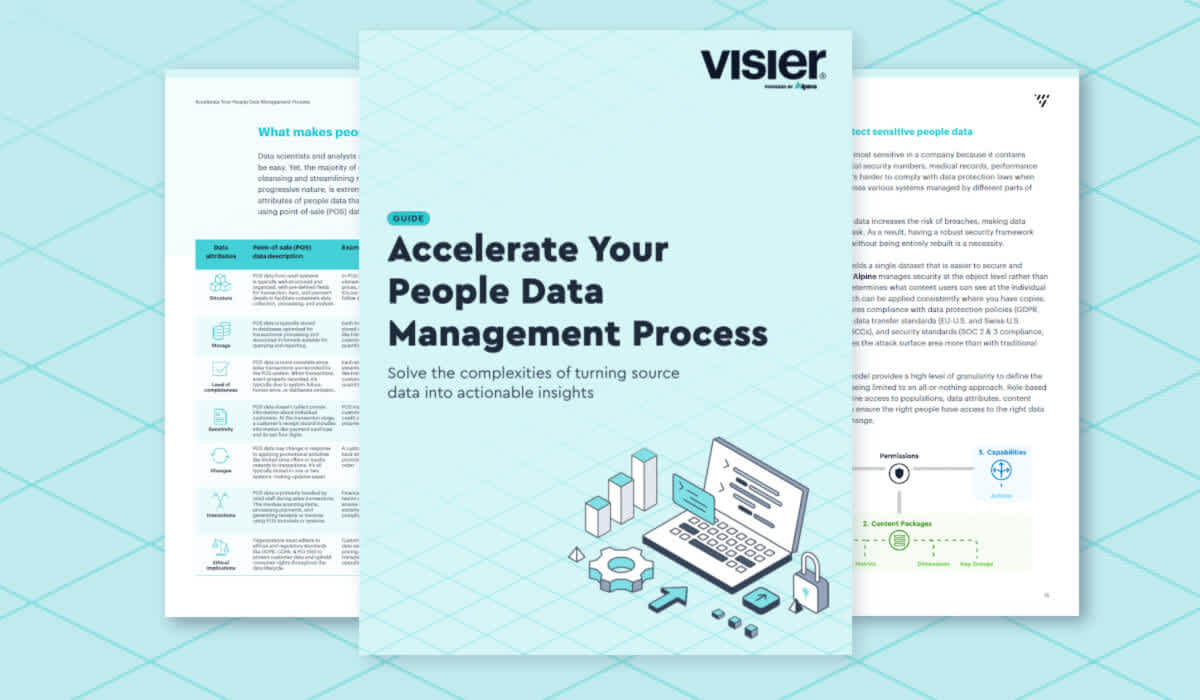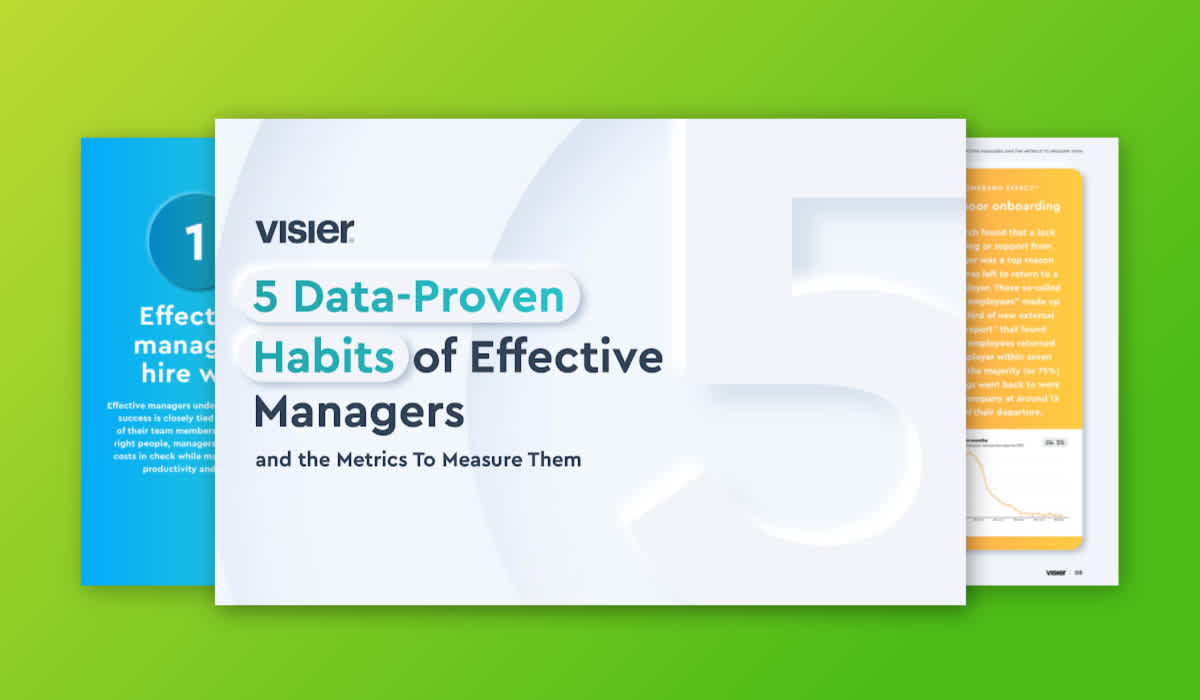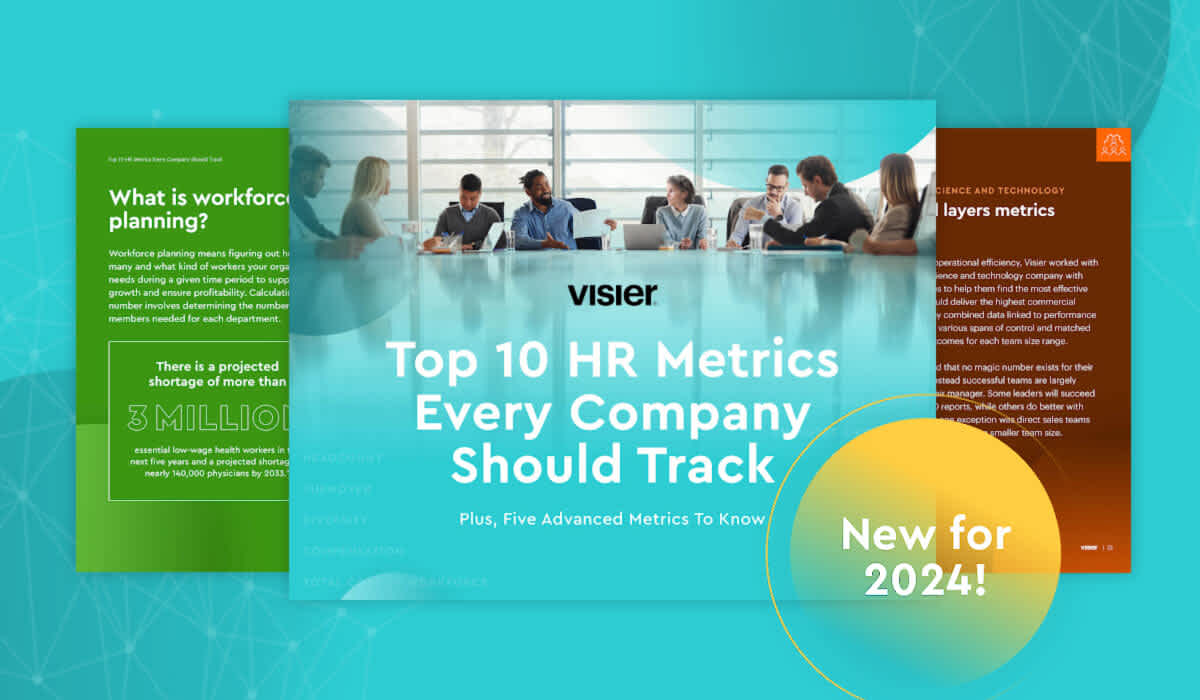Compensation Management: How To Solve Key Compensation Challenges
Discover how you can use data to support the people moments that matter, solving compensation challenges for your employees and your organization.
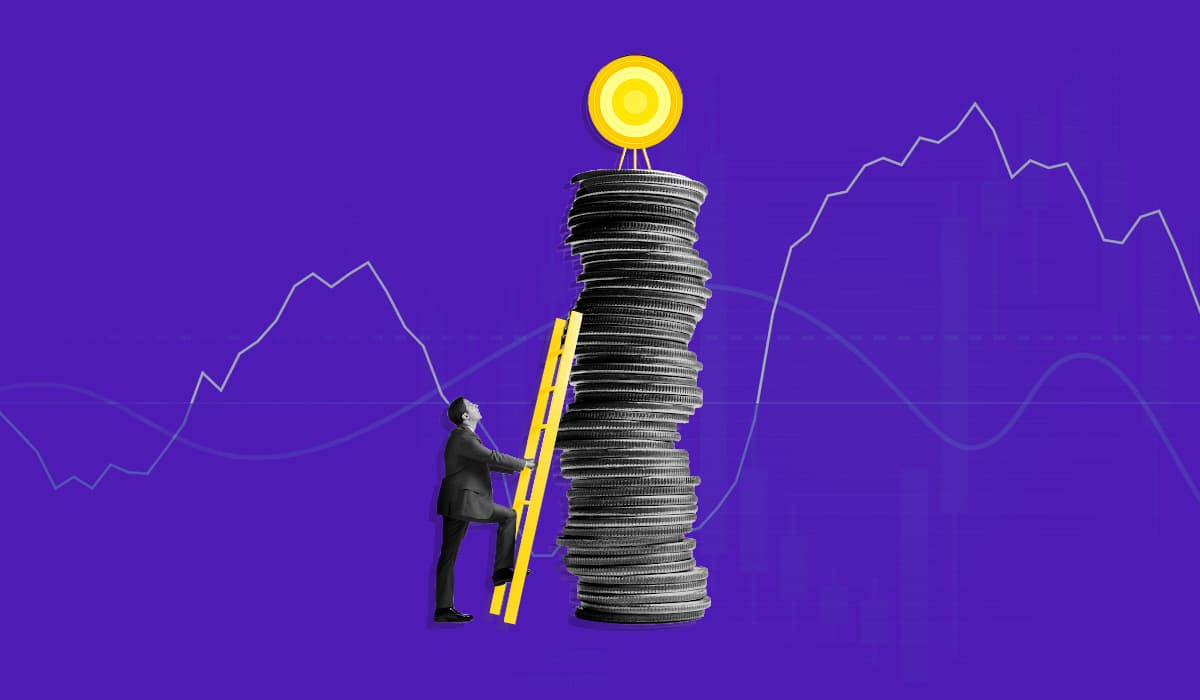
Compensation management has long been a major component for any company’s HR strategy. As the authors of Aligning Compensation Systems With Organization Culture put it: “Depending on how [compensation is] designed, communicated, and managed, it can positively or negatively influence an organization’s culture and impact an organization’s optimal performance.”
This is particularly true during times of economic upheaval, when organizations need to balance expenses with retaining their top performing employees. Data-driven compensation management—powered by workforce analytics—helps organizations effectively optimize salary and rewards so that they are commensurate with employee contributions, while also ensuring financial sustainability for the company.
This article will explore the concept of compensation management and its benefits, and discuss how organizations can use analytics and platforms to solve key compensation challenges.
What is compensation management?
Compensation management is a collection of programs, policies, and strategies that companies use to determine total compensation—including salary, benefits, and perks—for their employees.
The HR department is typically in charge of creating and managing the compensation strategy for the organization. Their responsibilities range from ensuring that compensation is competitive in the market, to establishing salary and total compensation ranges, to negotiating salaries and raises.
A successful, complete compensation program uses both financial and non-financial incentives to reward employees. Because of that, compensation management is a key component of employee retention, satisfaction, and performance management.
Specifically, compensation management includes:
Developing and implementing programs and policies for employee compensation
Planning and distributing the overall pay and benefits package to employees
Ensuring total compensation remains competitive within the industry, and equitable across the organization
Managing the company benefits program
Ensuring that job classifications, and their associated compensation bands, are up-to-date
The primary objective of compensation management is to make the right decisions about pay and rewards to attract and retain the talent that’s needed to achieve company objectives. It’s also closely tied to the overall strategic goals and budgets for the organization as a whole.
Because of that, it’s important for organizations to base their compensation decision on relevant and accurate data that rolls up to larger company initiatives. Analytics, therefore, plays a big role in compensation management.

Why is compensation management important?
Compensation management is important because it dictates the strategy behind one of the most important factors for most employees when choosing to join or stay at a company. Salaries are also usually a company’s biggest cost center, meaning proper management and forecasting is critical to remaining financially viable.
The benefits of compensation management, therefore, apply to both employees and the company as a whole.
They include:
Attracting and retaining top caliber candidates by offering fair compensation in the market
Controlling costs and forecasting expenses, which is particularly important during economic downturns or periods of change
Creating greater transparency into compensation, something that 60% of employees say would prompt them to change jobs
Ensuring consistent and merit-based compensation that recognizes and rewards top performers for their contributions
Increasing employee satisfaction and retention rate, by addressing and acting on a major priority for virtually all employees
Ultimately driving better employee performance thanks to employees being happier, loyal, and less distracted about pay equality and transparency
While the benefits of compensation management are clear, achieving them isn’t always quite as black and white. This is where a solid compensation strategy comes into play, along with the right solutions to make managing that strategy easier.
Let’s talk about the second priority: choosing the right compensation management solution.
What to look for in a compensation management solution
Compensation management software helps HR departments create, manage, and monitor the impact of their compensation programs. They marry employee and organizational data to help create and execute an optimal compensation strategy.
The primary purpose of using a compensation management solution is to:
Optimize compensation costs, while remaining competitive
Develop effective compensation strategies for candidate recruitment
Automate compensation management, pay adjustments, and package creation
Analyze and visualize compensation data to help HR make the right decisions
When evaluating compensation management solutions, HR departments should look for an option that makes it easy for them to understand what competitive and fair pay looks like for their workforce. Every business is unique, and it’s important to choose a compensation management software that can connect to a people analytics solution. This will ensure that the HR team can get insights on how to improve and optimize their compensation program to meet the needs of their people.
Here are some fundamental capabilities to look for when assessing compensation management solutions:
Automation. A compensation platform should help to streamline and simplify compensation practices. That means automating workflows, making it easier to identify and analyze key data, and creating compensation frameworks.
Calculations. Calculations are critical to any compensation plan. This is how organizations both establish suitable pay frameworks, and ramp that information up to the wider company budget. As companies grow, it can be tricky to standardize and track compensation across all employees. Compensation management software can perform those complex calculations, saving HR teams time, errors, and the risk of inequity.
Budget planning. As mentioned, compensation is a significant factor in any organization’s overall budget planning. Because of that, ensuring accurate compensation figures and clear lines of communication is key. Compensation management software can help teams quickly and reliably access and share budget and compensation data to ensure alignment.
Data segmentation and reporting. As companies grow, they generate more and more compensation, people, and financial data. Without the right software, this data can become unmanageable, raising risks of improper or inconsistent compensation, or pay allocation based on unclear reasoning. Choosing a platform with strong data segmentation and reporting capabilities will help HR teams quickly find and act on trends, identify and mediate problem areas, and generally improve their decision making around compensation.
Compliance. Again, as companies grow, compensation becomes more complex. That’s especially true for organizations that operate internationally, opening them to complexities around regulatory and regional compliance in their areas of operation. Compensation software can help navigate those tricky compliance waters, ensuring that the company remains compliant with all rules and regulations for all regions.
Integrations. Compensation data cannot be siloed. It must be accessible by HR, business operations, and senior management to ensure they can make informed and timely decisions. Because of that, finding a compensation management solution that integrates with the rest of an organization's tech stack is critical. This will help ensure that compensation data is accessible and actionable across all departments that need it.
A core theme throughout this article so far has been the importance of analytics and data. Let’s dig a bit deeper into how to use that data as a core part of compensation management.
How to use compensation analytics
Compensation analytics is a sub-discipline of HR analytics that focuses on optimizing the cost of a company’s workforce compensation to find efficiencies and drive bottomline growth.
There is no shortage of people data—from HRMS to Applicant Tracking to Payroll to Learning Management systems—the scope of data being generated each day can be overwhelming. But it’s also critical to organizational success long term.
Whether it’s managing job candidate salary expectations, addressing employee pay concerns, developing workforce plans, recruiting strategies, ensuring compliance, or helping managers understand opportunities to differentiate top talent, data allows organizations to make decisions based on facts, not guesswork or assumptions.
To be successful in leveraging that data for insights, it’s critical that HR and business leaders have a way to mine for insights quickly and correctly so they can make the best calls for their organization and employees. This is where strong compensation management platforms that interact with the rest of the HR tech stack come into play.
With the right tools and integrations, organizations can reliably collect financial and people data from a range of sources, analyze it through automations, and make objective decisions about how to manage compensation going forward.

Specifically, compensation analytics helps organization determine:
The competitiveness of their compensation offerings
Whether or not compensation is distributed equitably across the organization
If they are accounting for regional discrepancies
How to establish reliable compensation levels and bands
It does so by automating and streamlining key areas of compensation management like:
Salary benchmarking
Pay equity auditing
Pay transparency
Budgeting and forecasting
Skill gaps and future needs projections
Expense management and goals tracking
Market data comparison
Labor cost analysis
This helps HR teams stay on top of all key activities associated with strong compensation management, enabling them to make the right decisions, at the right time, for their employees and company.
Examples of compensation challenges—and how to solve them
So far we’ve talked generally about the benefits of compensation management. But it’s also helpful to have some examples. Here are examples of how strong management strategies can solve specific compensation challenges.
1. Negotiating counter-offers
I recently shared an example of a typical counter offer scenario. When an employee receives a competing offer, their manager’s first instinct may be to match it. The key word here is instinct, which can lead to costly mistakes. Intuition can cause even the best managers and HR professionals to make poor judgment calls. The way to mitigate this risk is to look at the data—to find out how the employee compares to the rest of their team and what the market is paying for a similar role.
Compare compensation profiles, incentive rates, performance ratings, employee attributes to others on the same team or in similar positions. Armed with this information, managers can make informed decisions about whether or not to agree to the counter offer that are no longer based on emotion, but reality.

2. Investigating pay equity
Pay equity is a top concern across all industries. As Steve Boese urged, if companies haven’t done an internal compensation review across salary bands, job roles, gender, ethnicity groups, age, and tenure to check for any potential discriminatory treatment, then they need to put this on their priority list this quarter.

Use people analytics to get answers to important questions like:
What is the variation for pay within different ethnic groups?
How do budgeted salary increases compare for male and female employees?
What is the variation in pay within the salary band based on age and tenure?
HR teams should look for insights that reveal how fair their compensation practices are. If they find any indication of discrimination, they must analyze that data further to uncover evidence that they can use in discussions with managers and executives to resolve the issue before it results in fines and other legal troubles.
3. Managing compensation costs
Performing internal audits like the pay equity example above can lead to company-wide changes to pay and benefits. Movements can lead to more hires and reduced turnover, as well as increased wage and benefits pressures at competing organizations. If HR teams find that their organization is behind the pack, it can be tempting to simply follow the lead of others. However, this can lead to wasted spending.
How, when, and where to change pay and benefits is a strategic decision that requires careful consideration of the total rewards strategy and prior analysis to ensure any money invested impacts the organization in the way intended. Presenting cost increases to the senior executive requires more than pointing to the fact that someone else is doing it.
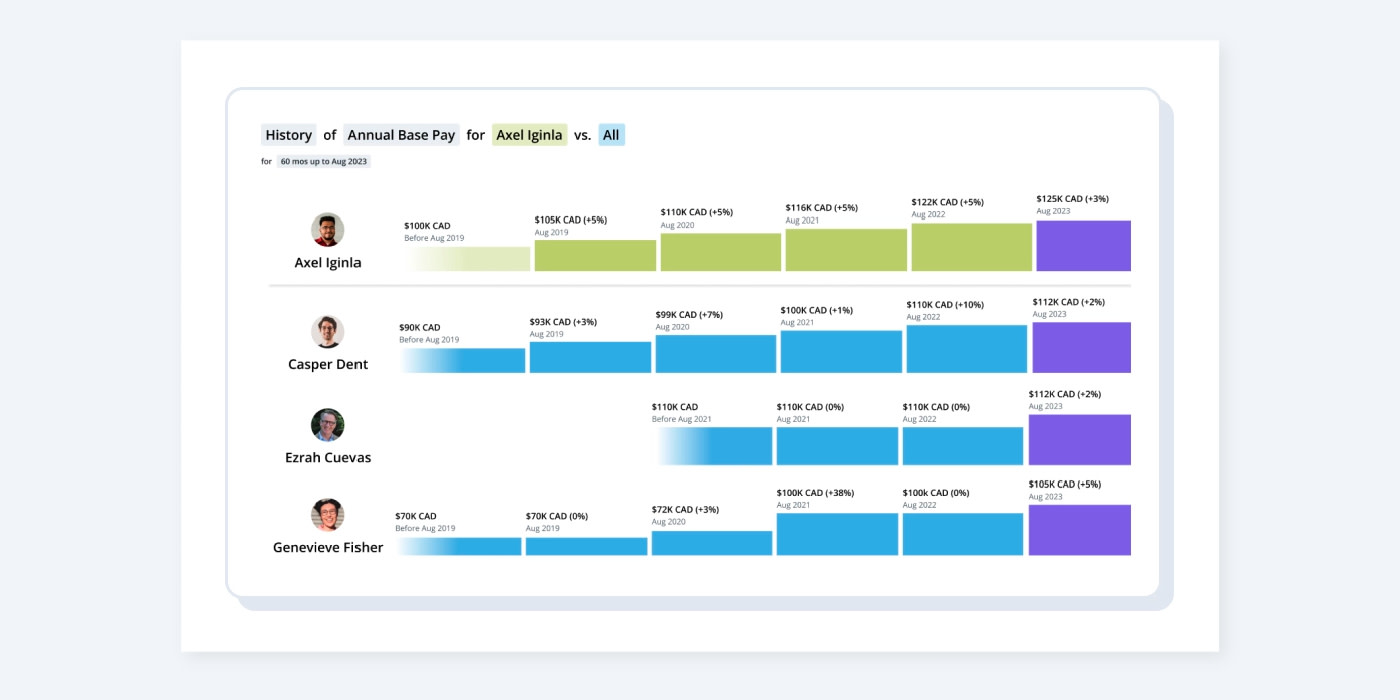
Being able to back up the proposed solution with a clear analysis of the context around the business, as well as specific internal factors which impact the business is critical.
The company’s people strategy platform should be connected to business and financial data (in addition to HR systems) so they get a complete view of the impact compensation changes will have across the organization. This enables the HR team to check that pay is being added in the right places to support retention or drive performance instead of just a blanket addition to costs.
It also helps companies achieve the right balance of base and variable pay so they have the flexibility to adjust overall costs without resorting to a reduction in force during slow periods. In addition, companies gain the ability to plan out how cost changes will impact the organization in the longer-term so they can factor future budgeting and business results into their projections.

Get the Outsmart newsletter
You can unsubscribe at any time. For more information, check out Visier's Privacy Statement.
